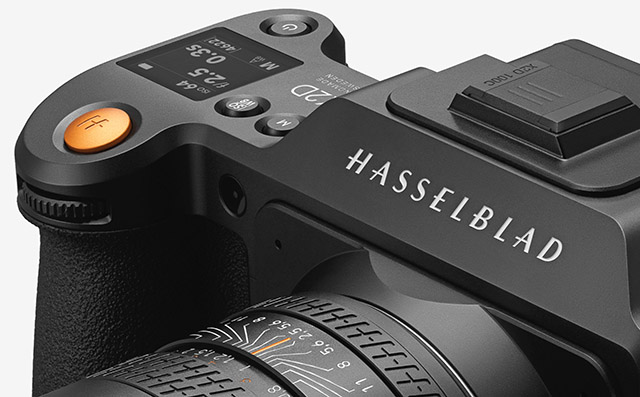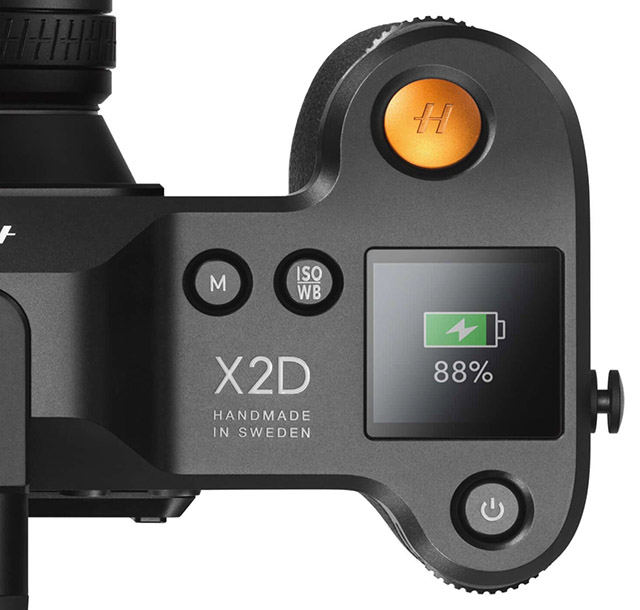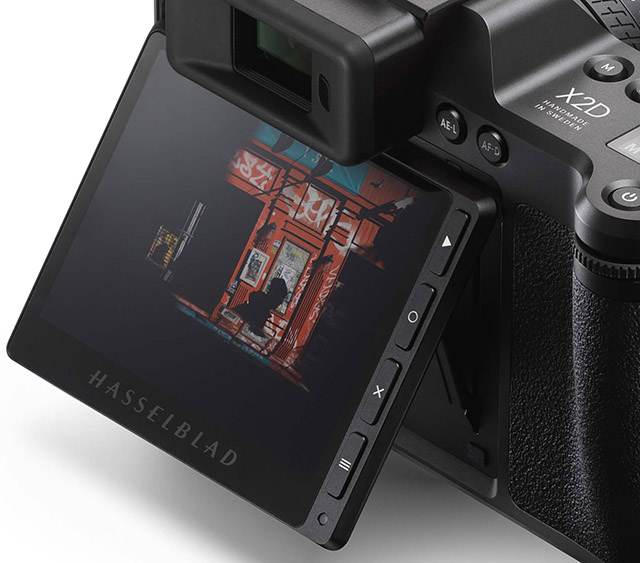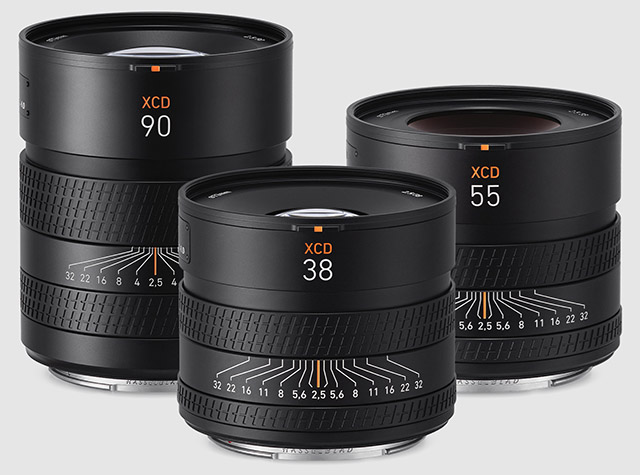Hasselblad announces X2D 100C camera with 100MP sensor, IBIS, and updated AF – plus 3 new lenses
posted Wednesday, September 7, 2022 at 8:45 AM EST

Hasselblad has announced its third medium-format mirrorless camera, the X2D 100C. It joins the company's two 50MP mirrorless cameras, the X1D and X1D II.
The highlight feature is a new backside-illuminated CMOS image sensor with about 102 megapixels of resolution – like the Fujifilm GFX 100 and GFX 100S cameras. The image sensor is 43.8 x 32.9 millimeters too, so we suspect it's the same sensor as that found in Fuji's competing medium-format mirrorless cameras. Hasselblad promises 15+ stops of dynamic range via its 16-bit raw files, and the X2D's native ISO ranges from 64-25,600. This is different from the GFX, as its native ISO range is 100-12,800.
Joining the new image sensor is a new processor and improved autofocus system. The sensor includes phase-detect autofocus points that cover about 97% of the image sensor. Hasselblad promises significantly improved autofocus performance. Specifically, the AF speed is 66% better than the X1D II.
The X2D 100C also incorporates in-body image stabilization to help users get the most from the super high-res sensor. The 5-axis IBIS system promises up to 7 stops of shake correction, which is an impressive spec.

Another distinct feature is the camera's built-in storage. The X2D 100C includes 1TB of internal SSD storage. The camera also includes a CFexpress Type B slot.
The X2D 100C body looks quite similar to the X1D series, which isn't a bad thing. The X2D has a striking orange shutter release, like its predecessor, although it seems like it could be slightly darker this time around. The new camera is dark gray, and the camera looks great. The new camera is slightly heavier and larger than its predecessor, perhaps due to the inclusion of the IBIS system. The camera weighs 790 grams (1.74 pounds), so it's not lightweight.

There are some other usability changes. The X2D includes a new top display panel and a new flip-up touchscreen. At 3.6 inches, it's a very large display. The 0.5-inch electronic viewfinder has been improved, too, with increased resolution, refresh rate, and magnification. The viewfinder offers 1x magnification – up from 0.87x – and has 5.76M dots -- up from 3.69M. The diopter adjustment is made electronically through an adjustment menu, which is unusual.

Hasselblad has also announced three new lenses alongside the camera. The new XCD "V" series lenses utilize an updated design and significantly improved autofocus performance. The new lenses include linear stepping motors and lighter focusing groups, resulting in swifter focusing speeds. The three new lenses are the XCD V 38mm F2.5, XCD V 55mm F2.5, and XCD V 90mm F2.5. The trio of lenses includes updated focus rings – plus a focus clutch – and a customizable control ring that can adjust aperture, exposure compensation, ISO, or shutter speed.

One of the biggest differences between the GFX system and Hasselblad's XD series cameras is that Hasselblad uses a leaf shutter system in its lenses. In contrast, Fujifilm opted for a more typical focal plane shutter. The leaf shutter has numerous advantages, especially in studio settings. The previous XCD series lenses were limited to 1/2000s shutter speeds via their leaf shutters. The new V XCD lenses offer faster 1/4000s shutter speeds.
The Hasselblad X2D 100C is priced at $8,199, which is almost squarely between the $6,000 GFX 100S and the $10,000 GFX 100. The new XCD V 38mm F2.5, XCD V 55mm F2.5 and XCD V 90mm F2.5 lenses are $3,699, $3,699 and $4,299, respectively. The new camera and lenses are available through authorized Hasselblad retailers starting today.